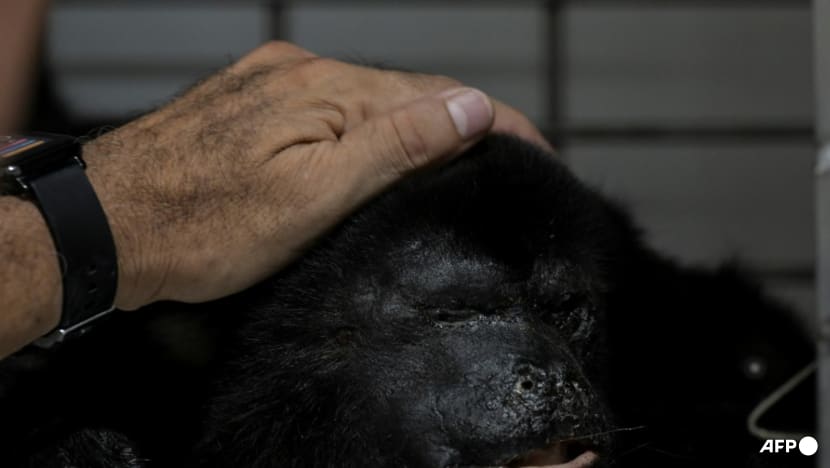Heat-related howler monkeys deaths rise to 157 in Mexico

A sick howler monkey recovers at a clinic in southern Mexico after being taken there by residents (Photo: AFP/Yuri CORTEZ)
MEXICO CITY: The number of heat-related howler monkey deaths in Mexico has risen to 157, the government said on Sunday (May 26,) with a tragically small number of the primates treated or recovering.
A heat dome area of strong high pressure centred over the southern Gulf of Mexico and northern Central America has blocked clouds from forming and caused extensive sunshine and hot temperatures all across Mexico.
Last week, environmentalists reported that 138 midsize primates, known for their roaring vocal calls had been found dead in the Gulf coastal state of Tabasco since May 16.
At least a dozen cities in Mexico have already broken records for high temperatures in recent days, in a pressing heat wave that has caused at least 48 people to die from heat stroke and dehydration in two months, according to the Ministry of Health.
RECORD HEAT ACROSS MEXICO
The intense heat has caused blackouts for several hours in some areas of Mexico, mainly the north, and has led to the suspension of classes in states such as San Luis Potosi, in the centre of the country, where last week thermometers reached 50 degrees Celsius.
Mexico City, located in a valley and with a population of more than 10 million inhabitants, has already broken temperature records three times so far this summer season, amid a persistent drought that continues to test the country's reservoirs of water and the electrical energy network.
In the colonial city of Puebla, located about 80 kilometres from the capital, an unusual hailstorm and rain were recorded this week that caused destruction, flooding, falling trees and gusts of wind of up to 50 kilometres per hour, according to local authorities.
Researchers from the National Autonomous University of Mexico (UNAM) have already warned that in the next 10 to 15 days the country "will experience the highest temperatures recorded in history," which will worsen levels of pollutants in the affected areas due to the presence of ozone.
The heat is also worsening the effects of the drought, which already impacts more than 70% of the country to varying extents.
The Environment Department reported late on Sunday (May 26) that the number of howler monkey deaths had risen to 157, and that research was continuing into the causes of the deaths. But a wildlife biologist on the scene said it appeared to be heat stroke.
The department said deaths were occurring in both Tabasco and the neighbouring state of Chiapas, and that 13 monkeys were under treatment and seven had been treated and released back into their habitat.
The department said some of the monkeys were being treated for dehydration, and that three were in serious but stable condition.
Moreover, with heat, fires, and deforestation hitting the trees where the howler monkeys live, it was unclear whether even releasing them could ensure their survival.
Wildlife biologist Gilberto Pozo attributed the deaths to a “synergy” of factors, including high heat, drought, forest fires and logging that deprives the monkeys of water, shade and the fruit they eat, while noting that a pathogen, disease or other factor can’t yet be ruled out.
Normally quite intimidating, howler monkeys are muscular and some can be as tall as 90 centimetres with tails just as long. Some males weigh more than 13.5 kilograms and can live up to 20 years. They are equipped with big jaws and a fearsome set of teeth and fangs. But mostly they’re known for their lion-like roars, which belie their size.
There have also been reports from Mexico's southeastern states of birds being affected by the heat.














